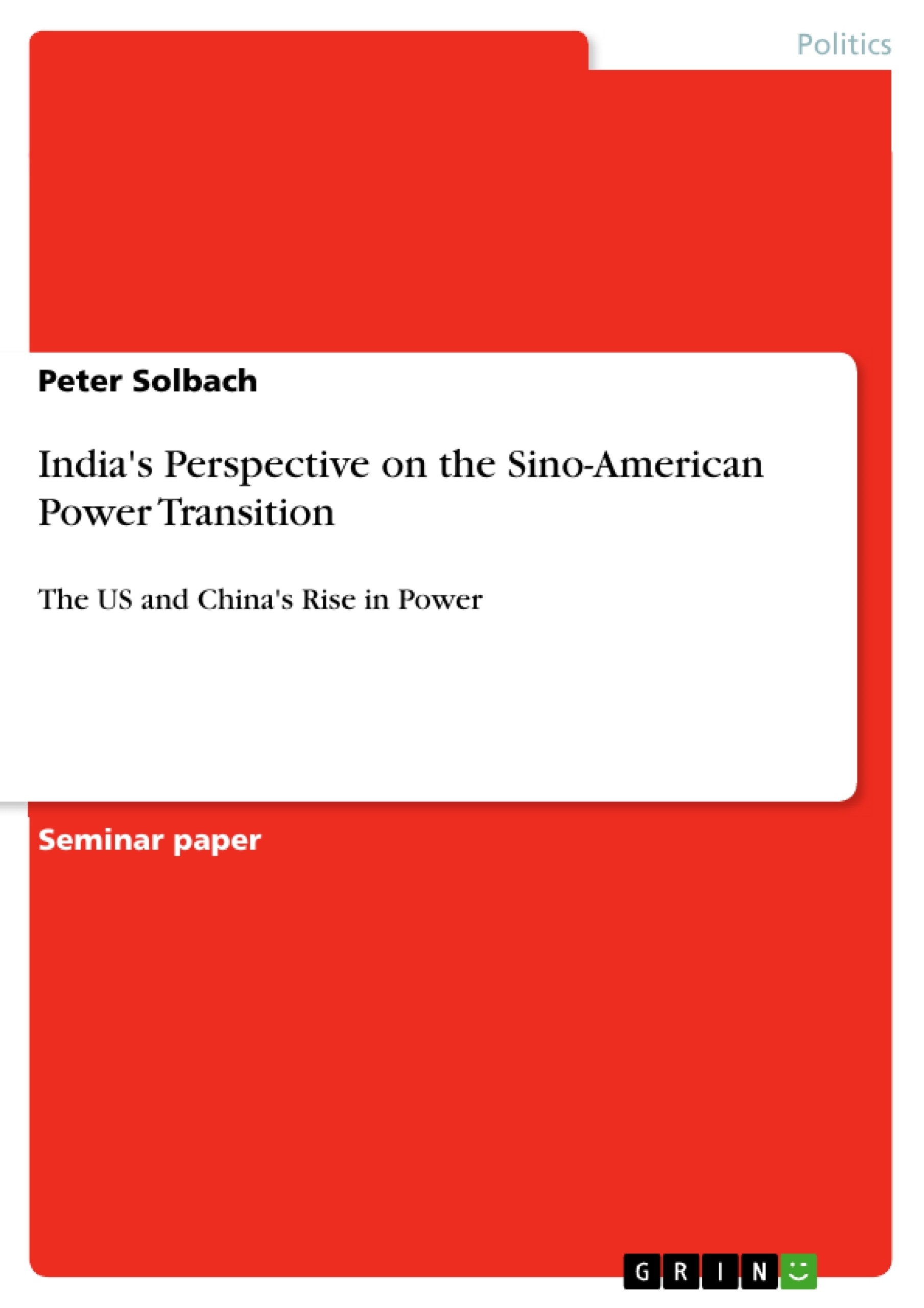In this paper, India’s stance on the Sino-American power transition will be examined. The questions that arise out of this task and will be answered are: How satisfied is India with the status-quo of the international system and how will China's rise in power change India's overall state satisfaction?
In face of America's relative decline, the continuous existence of the established international order, the Pax Americana, throughout the twenty-first century is more and more becoming a question of the rising states’ satisfaction with this order. More specifically, it is becoming increasingly clear that India, as the second main driver of the global power shift, will play a significant role in deciding the future of the international system.
To answer these questions a quick overview of the global and regional power shift and China's and India's respective state power are given. Afterwards, the theoretical framework for power transitions, the power transition theory, is explained with a focus on the role of state satisfaction and how it can be measured. Public opinion polls and key foreign policy initiatives, as well as alliances, are analyzed to estimate India’s state satisfaction with the current system and the influence China’s rise in power has on it.
Inhaltsverzeichnis (Table of Contents)
- Introduction
- Current State of Research
- Theory
- The Role of State Satisfaction in Power Transitions
- Indicators of State Satisfaction
- Materials and Methods
- Public Opinion regarding the US and China's rise in Power
- Key Alliances and Perception Analysis
- Results
- Public Opinion on the United States and China
- Foreign Policy
- Alliances and Policy Initiatives
Zielsetzung und Themenschwerpunkte (Objectives and Key Themes)
This paper examines India's perspective on the Sino-American power transition. It aims to assess India's satisfaction with the current international system and how China's rise in power might influence India's overall satisfaction. The paper explores whether India would be inclined to side with the United States or ally with China in the event of a power transition.
- India's satisfaction with the status-quo of the international system
- The impact of China's rise in power on India's state satisfaction
- India's potential role in the future of the international system
- The theoretical framework for power transitions and the role of state satisfaction
- The analysis of public opinion polls and key foreign policy initiatives in India.
Zusammenfassung der Kapitel (Chapter Summaries)
- Introduction: Introduces the concept of the "Chinese Century" and the increasing shift in global power distribution towards Asia. Highlights the potential Sino-American power transition and India's crucial role in shaping the future of the international system. Presents the research questions and goals of the paper.
- Current State of Research: Provides an overview of existing research on the global power shift towards Asia and the impending power transition between the United States and China. Examines data from the Bonn Power Shift Monitor (BPSM) and compares China and India's demographic structures and economies, highlighting their respective strengths and challenges.
- Theory: Introduces the Power Transition Theory (PTT) and its original formulation by A. F. K. Organski. Explains the role of state satisfaction in power transitions and how it determines the likelihood of major war. Examines the theory's application to the Sino-American power transition context.
- Materials and Methods: Outlines the data sources and analytical approaches used in the study. Describes the use of public opinion polls from the Pew Research Center and the analysis of key foreign policy initiatives and alliance portfolios of India, the United States, and China.
- Results: Presents the findings of the study, focusing on public opinion regarding the United States and China in India, as well as India's foreign policy stance on alliances and policy initiatives.
Schlüsselwörter (Keywords)
This paper explores key themes and concepts including: power transition theory, state satisfaction, Sino-American power transition, India's foreign policy, public opinion, alliances, and the future of the international system.
- Quote paper
- Peter Solbach (Author), 2019, India's Perspective on the Sino-American Power Transition, Munich, GRIN Verlag, https://www.grin.com/document/465558



